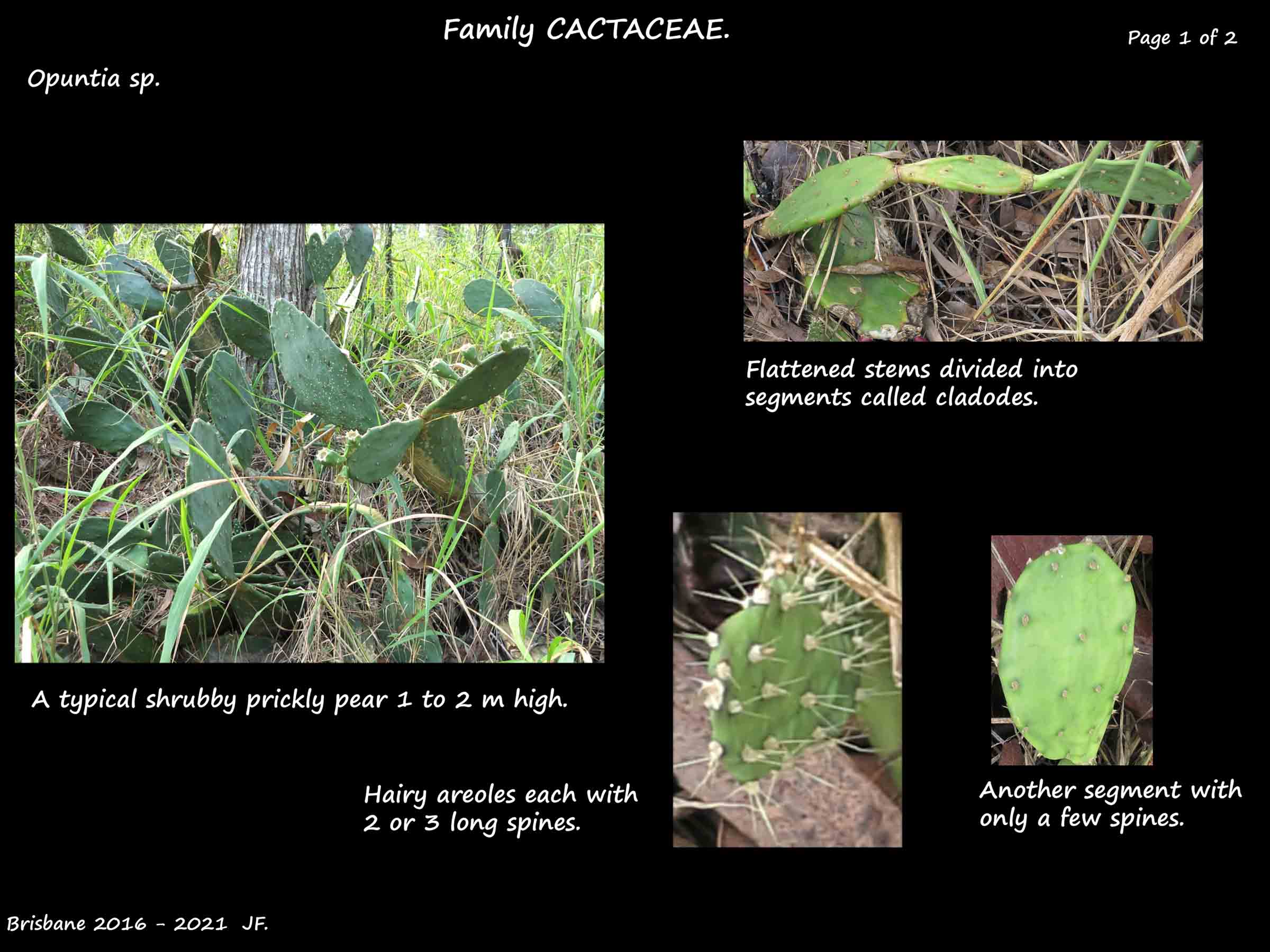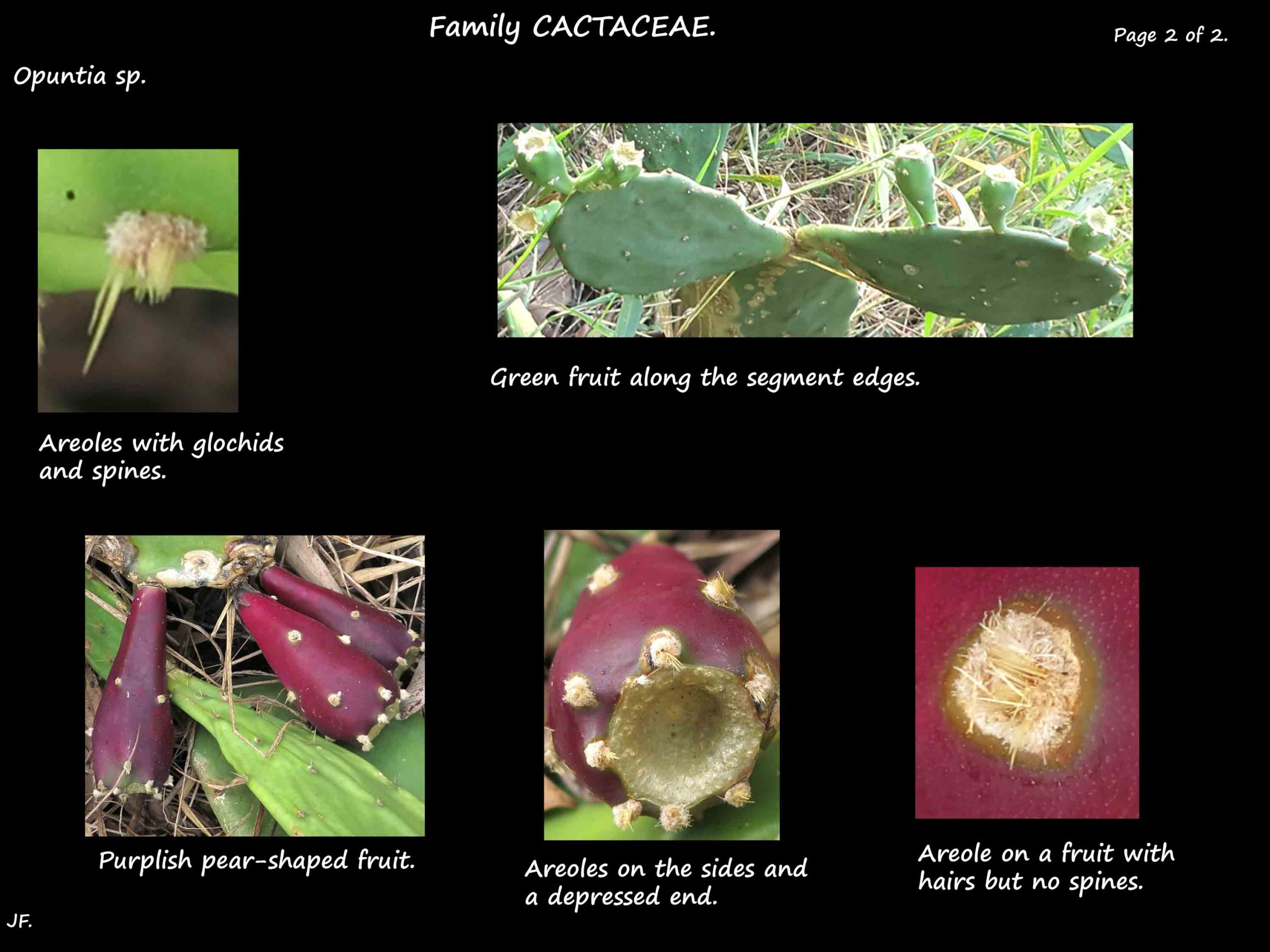Opuntia.
Family Cactaceae > Subfamily Opuntioideae > Tribe Opuntieae.
There are over 180 species and they are native to the Americas.
Around 17 species are naturalised in Australia including 6 in S. E. Queensland.
Prickly Pear is a non-specific term that includes many Opuntia species.
They are sometimes referred to as just Opuntia ssp. as they hybridise readily.
There are many common names, sometimes shared among a number of species.
Opuntias are part of a group known as Opuntioid cacti.
Australia has around 30 naturalised species of these that belong to 3 genera.
Austrocylindropuntia and Cylindropuntia, like Opuntia, are all significant weeds.
Opuntia are mostly shrubs around 1 m high but some tree-like ones are up to 8 m.
The stems are mostly flattened into fleshy segments called cladodes or pads.
Segments can be roundish or club-shaped and occasionally cylindrical.
The stems may or may not branch.
The areoles are usually slightly raised but are sometimes large enough to be termed tubercles.
In Opuntia the small hairs or bristles in the areoles have barbs and are called glochids.
There are also 1 or more long or short spines that in some species have a sheath.
True leaves are only present for a short time on the youngest segments.
They are green and can be conical or needle-like.
The usually solitary flowers arise from the areoles on the sides of the segments.
Up to 6 cm across they have no stalks.
The inferior ovary is surrounded by tissue from the receptacle (pericarpel).
There may be scales, areoles and sometimes spines on it.
The tepals insert onto the rim of this.
Tepals can be white, yellow, orange, red, pink or purple.
There are numerous stamens that can be spirally arranged or clustered in whorls.
The fruit are round, oval or pear-shaped berries.
They are sometimes succulent and have areoles with glochids and sometimes spines.
Initially green then mature to red, orange, yellow or purple.
They also reproduce vegetatively when segments fall and grow into new plants.
J.F



